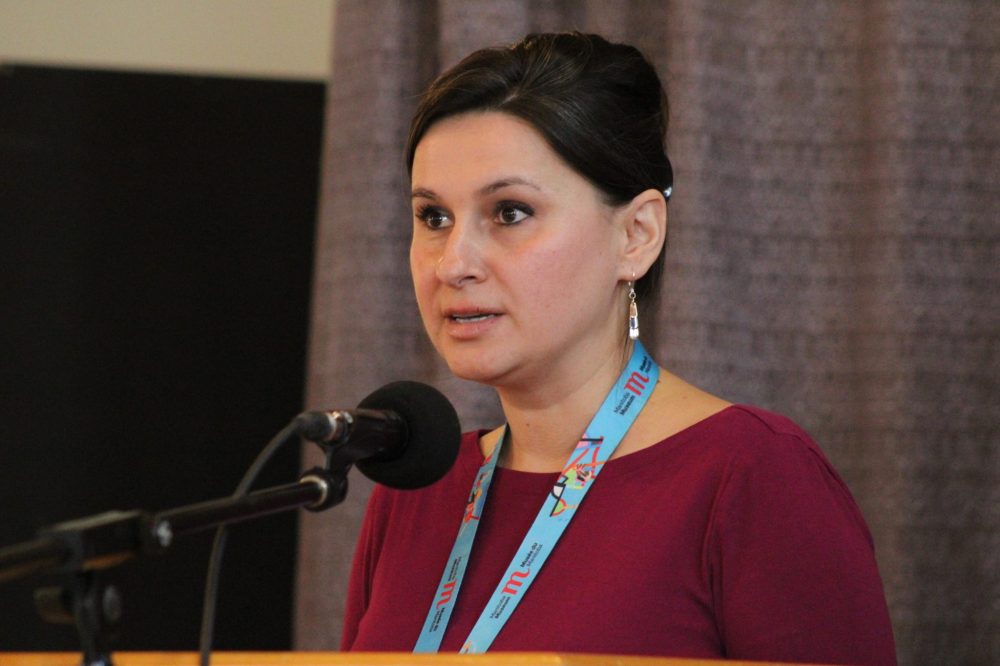Museum CEO shares story of overcoming adversity
Advertisement
Hey there, time traveller!
This article was published 05/11/2022 (914 days ago), so information in it may no longer be current.
To say The Manitoba Museum CEO Dorota Blumczynska battled adversity at every turn is no exaggeration. The guest speaker at the South Eastman Rotary Club annual fundraising luncheon last Thursday, she shared her story to highlight how she met that adversity and turned it into a life and career she loves.
Born in Poland, Blumczynska was born six months before martial law took hold of Poland which had been under Soviet occupation for decades. Her parents were active in battling behind the scenes for a democratic Poland, finally deciding to escape the country in 1988.
With her father already out of the country, she, her siblings and her mother gained official permission to go on “holidays”. Through checkpoints where they were routinely interrogated, they traveled through then Czechoslovakia to Germany where at seven-years-old, she lived in a refugee camp for 14 months. She can still recall watching the train station disappear in the distance.

“My grandparents stood on the platform and wept,” she said.
During the 1980s the Canadian government had established a new category of immigrant called the political prisoner and oppressed person class.
“Living under Soviet occupation qualified anyone leaving, crossing an international border to become a refugee,” she said.
Her voice broke as she told the crowd she was eight-years-old, on Oct. 27, 33 years ago that day that she landed in Winnipeg.
Times were very hard then as well.
“No one spoke of credential recognition,” she said. “Although both of my parents had master’s degrees, their education would never be recognized. Both had professional experience. That didn’t qualify them for work.”
The family of seven struggled to put food on the table.
“It was impossible to buy everything that was needed, nothing that was wanted,” she said.
Blumczynska said her mother became sick, dying at the age of 44, when she was just 16-years-old. Before her death her mother made her promise to attend university, urging her to get something “practical” when she told her mom she wanted to be a writer.
“You’ll never put bread on the table writing,” she said her mother told her.
A few months after her mom’s death, Blumczynska became a ward of the child welfare system, convincing them to let her live independently rather than be sent to a group home.
The government paid her rent and gave her $187 per month for everything else such as food, bus tickets, a phone line, clothes and utilities.
“In those two years I was often hungry,” she told the crowd that had just finished feasting on traditional Mennonite cuisine. “I stole food from grocery stores. I wore clothes that my friends no longer wanted. I walked kilometres to school, and no, I could not afford the heating bills.”
She graduated, got a job at RBC and attended university full time.
“Most days were 12 hours long and it took much longer than it might have taken others, but eventually I graduated with a bachelor’s in business administration,” she said.
She advanced in her work, and had a career waiting for her.
“I was set to retire at 55 if I only followed the path that lay ahead,” she said.
“I wasn’t fulfilling my purpose,” she added. “I wanted to change the world. At least I wanted to try.”
She left her job, went back to university and earned an English degree. Then she began working for an organization helping newcomers learn English.
“The Immigrant and Refugee Community Organization of Manitoba found me, and I felt that I had found home again,” she said.
Becoming CEO of The Manitoba Museum has also been a big learning curve for someone with no background as a museum expert.
She told those gathered that with nearly three million artefacts and specimens, 500 million years of history, nearly 80,000 K-12 students engaged annually and 300,000 visits a year, she feels the responsibility of sharing stories.
“We, as agents of change, faced with our own complicated truth as a colonial institution, yet committed to sitting in that discomfort so that we can with time, with work, with trust rebuilt and relationships reimagined, be transformed,” she said. “Because change comes from a place of discomfort.”
